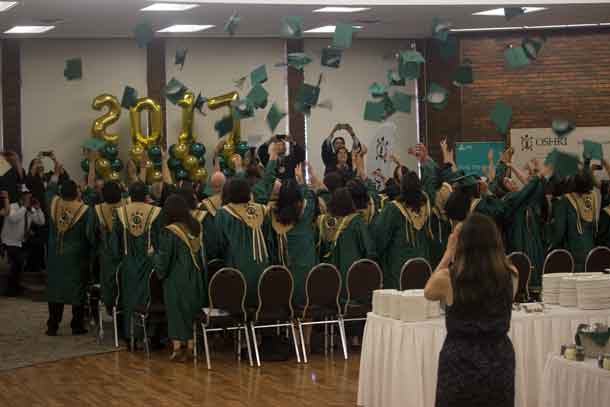OTTAWA – The work and progress in the area of education is guided by direction from the Assembly of First Nations (AFN) Chiefs-in-Assembly and the long-standing goal of achieving First Nation control of First Nation Education. AFN resolution 16/2016: Honourable Process to Develop Recommendations to support First Nations Education Reform directed the AFN to facilitate an honourable process between First Nations and Indigenous Services Canada. This process included full and meaningful regional First Nation participation to develop recommendations for reforming First Nation education which respects existing regional models and initiatives. AFN resolution 65/2017: New Interim Funding Approach for First Nations Education outlines the draft funding proposal (co-developed by First Nations) and a Memorandum to Cabinet. The resolution further reaffirms First Nations’ inherent and Treaty rights to education and insists that jurisdiction over First Nation education remains with each First Nation.
First Nations across the country now have the opportunity to design their own education funding agreements based on their own priorities and real needs. In a letter to Chiefs and Councils dated August 14, 2018, Minister of Indigenous Services Jane Philpott outlined a new approach to funding First Nations K-12 education developed in collaboration with First Nation educators, directors of education, experts and technicians. The letter speaks to work underway by federal officials and the AFN Chiefs Committee on Education (CCOE) to support the establishment of regional technical tables that will design new Regional Education Agreements (REAs).
Based on direction from Chiefs-in-Assembly, the CCOE, together with First Nations educators, directors of education, experts and technicians, have co-developed with the federal government a policy proposal that led to the development of a Memorandum to Cabinet. The Memorandum to Cabinet is used to propose and explain a new measure or new federal initiative and to obtain cabinet approval. These documents are necessary to change federal policy and unlock commitments for federal education programming and funding made in the 2016 federal budget.
This work and advocacy by First Nations, working together with the AFN, have resulted in a new approach to the funding of First Nations K-12 education driven by First Nations and aimed at respecting First Nation control of First Nation education. The new approach opens the door for work at the regional level to refine, adapt and improve formula-based funding models to better respond to unique student needs and cost-drivers, as defined by local First Nations. It will also create greater funding equity, support local diversity and increase transparency of the federal funding approach.
The new approach is based on regional funding agreements (Regional Education Agreements or REAs) designed by First Nations. REAs will provide First Nations with the flexibility to distribute education funding within their region as they see fit to support the specific needs of their students, schools, and nation. A “region” is defined as any territory where First Nations choose to implement First Nation control of First Nation education and negotiate a REA. Each “region” will be determined by First Nations and may be linked to geographic location, mutual goals or similar circumstances. This could include, but not be limited to, a territory defined as a single First Nation, Tribal Council, Treaty affiliation, language family, or an entire province. For Treaty First Nations, only Treaty people will speak on behalf of Treaties.
Key aspects to REAs include greater sufficiency, more predictability and strengthened First Nation control. Greater sufficiency comes from unlocking commitments made in the 2016 federal budget ($665M), which includes additional funding for language and culture, and full-time kindergarten at First Nations schools. New formula-based, regional funding models will ensure First Nation students are supported by predictable base funding, and First Nation education organizations will rely less on proposal-based funding and more on targeted multi-year funding. Regional technical tables will support the implementation of the new regional funding approach to develop REAs that respond to First Nations’ goals and priorities.
First Nations interested in pursuing a REA can confirm a mandate from their members and/or leadership to enter into REA discussions. There will be no proposals to access funding, but regions must submit a vision, work plan and budget on their plan to design, develop and implement the REA.
REAs will have common components:
- 1. Comprehensive funding arrangements, covering all federal support for First Nations elementary and secondary education;
- 2. Clear and defined roles and responsibilities for First Nations and First Nation education organizations, including applicable service standards;
- 3. Mutual accountability mechanisms with clear objectives, performance indicators and reporting expectations for both the Government of Canada and First Nation education system participants; and
- 4. Responsibilities for working with provincial education systems to manage the costs associated with on-reserve students who attend provincial schools and for reporting from provincial school divisions to First Nations and the Government of Canada.
Since 2001, through the AFN, First Nations have pressed the federal government for policy and program reform to ensure that core funding for education directly flows to First Nation governments, education organizations and schools. The work and progress in the area of education is guided by direction from the Chiefs-in-Assembly and the long-standing goal of First Nation control of First Nation education. This means respecting, protecting and enforcing First Nations’ inherent rights and Treaty rights, title and jurisdiction. It means First Nation education systems under First Nation control and based on First Nation design, supported by direct transfers from the federal government.
Advocating for secure, fair funding for First Nation children and students is a key priority for the AFN in accordance with direction from the Chiefs-in-Assembly. The AFN is not involved in bi-lateral discussions and negotiations on REAs. The AFN will continue to support First Nations pursuing their vision of First Nation control of First Nation education.
For more information about the new approach to funding First Nations K-12 Education and REAs please visit: http://www.afn.ca/policy-sectors/education/or contact a CCOE representative in your region. You can also contact Janice Ciavaglia, AFN Director of Education at jciavaglia@afn.ca or Shannon Nix, Director General, Education Branch, Indigenous Services Canada at shannon.nix2@canada.ca.







